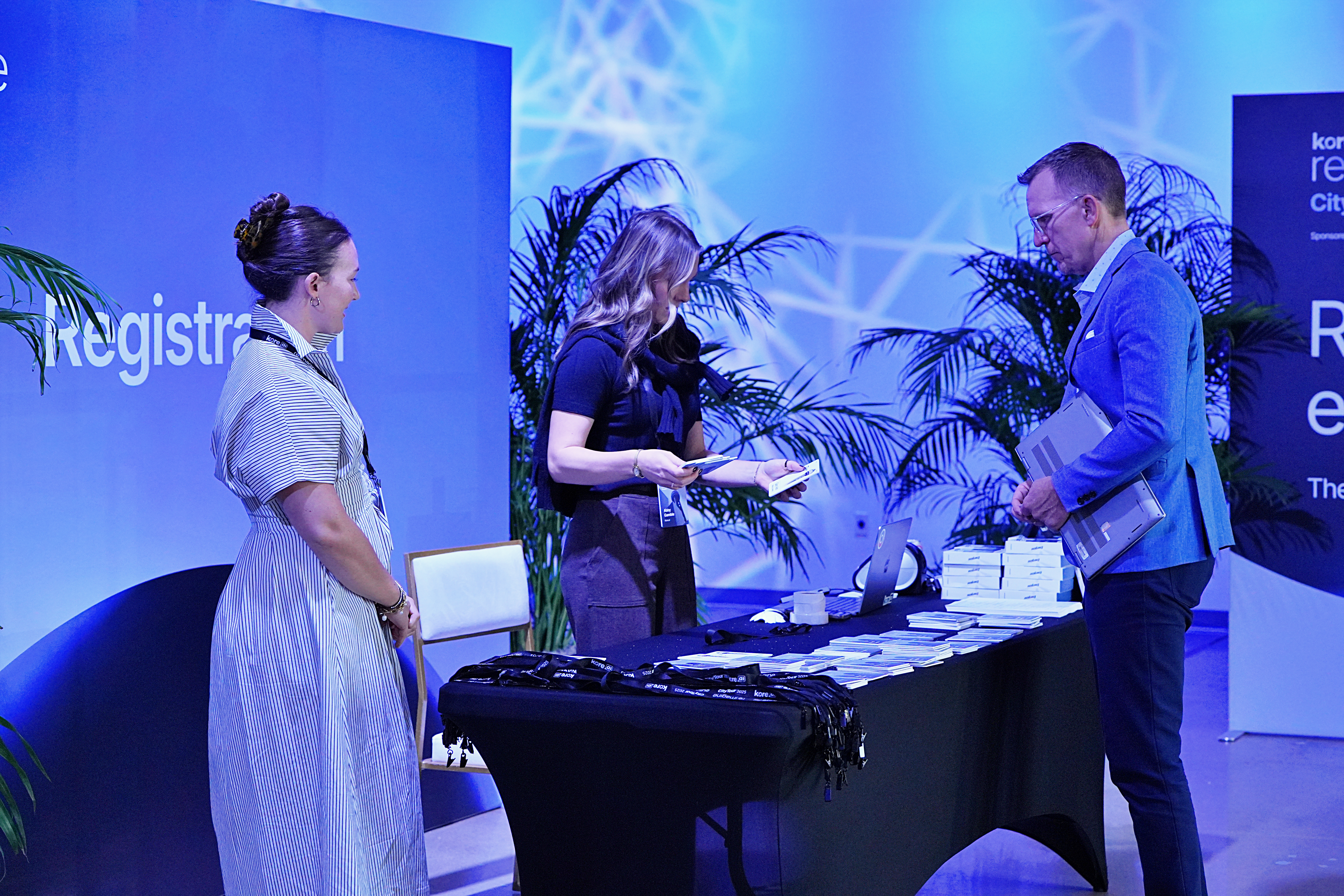Building your first Intelligent Virtual Assistant (IVA) can be an exciting yet challenging endeavor, and this guide is here to help you along your journey. Whether you're a seasoned professional or just starting out, this guide will provide you with the necessary steps and insights to create an exceptional virtual assistant that will leave a lasting impression.
If you are new to the Kore.ai XO Platform and want to familiarize yourself with the terms and concepts we use, please refer to Concepts and Terminology.
PCI Compliance: You must use data masking to collect credit card information but never capture CVV numbers. Kore.ai is committed to safeguarding all payment card data that is collected and processed. If card payment processing is required during chatbot interactions, you must transfer the processing to a PCI-compliant merchant.
Steps for Building Your Intelligent Virtual Assistant
Once you've joined the Kore.ai XO Platform, your next move is to make an intelligent virtual assistant. But before you dive into chatbot creation, it's a good idea to familiarize yourself with the fundamentals of building bots. You can find all the necessary information by clicking on this link.
- Define and Design: This is the initial stage where you gather any necessary details, determine user use cases, and understand the right bot capabilities for your business. This understanding brings clarity and efficiency to the chatbot development.
- Build and Develop: At this stage, your Intelligent virtual assistant starts to come together within the platform. You can start customizing and developing it to meet your organization's specific needs.
Stage 1: Define and Design
In the Define and Design stage, it's important to make sure you have all the important information clarified. This will help you avoid any confusion or mistakes later on. So, take some time to gather all the necessary details before diving into the actual building process.
Recommended Design Process: We recommend that you follow the steps below while designing your IVA:
- Understand User Needs: Gathering market requirements and assessing internal needs is crucial to determining the bot’s purpose. Business sponsors, analysts, and product owners can play a vital role in discovering what your users will need.
- Set the Intelligent Virtual Assistant Goals: Setting chatbot goals will help you create a well-defined use case. Use your gathered user research to understand how the chatbot can solve their specific needs. Be sure to involve the bot developer in this phase to make sure everyone is on the same page.
- Design a Chatbot Conversation: To define chatbot behavior in every possible scenario, it is a good idea to think through possible chatbot-user interactions. Simulating conversations helps to make sure that your chatbot experience is pleasant.
Questions to Ask During the Design Process
Try to answer as many of the following questions as possible:
- Who is the target audience? Assessing the target audience is always important to determining the right use cases to design conversations around. For example, technical help IVAs that are targeted to a tech-savvy customer need to be designed differently than one for an airline’s customer.
- What persona will resonate the most with this audience? Determining the IVA’s persona will help you define the tone and how it will talk and act in every situation.
- What is the main purpose of the IVA? The goal of the customer query that the IVA needs to address defines the endpoint of any conversation.
- What pain points will the IVA solve? Discovering what your target audience’s pain points are will help you decide the IVA’s purpose and scope. This will help identify what the IVA addresses and when the live agent needs to take over.
- What benefits will the IVA provide? The main benefits of using an IVA are saving time, easy access, and around-the-clock availability. Users won’t feel like their time is being wasted waiting for a live agent to be available to answer their query.
- What tasks do I want the IVA to perform? Simulating user conversations will help you identify which tasks are necessary to cater to your user’s needs.
- What channels will the IVA communicate on? Choosing the channels that the IVAs communicate on will to some extent drive the way the IVA is presented. The IVA will have some limitations depending on the channel and medium it is used on.
- What languages should the IVA support? When catering to a multilingual community, language support is imperative so be sure to build the dictionary simultaneously with your IVA design.
Stage 2: Develop and Build
Once the chatbot capabilities and ideal use cases are well-defined, the chatbot developer can begin the process of configuring bot tasks, defining intents and entities, and building conversational dialogue.
The general bot development process in the Kore.ai XO Platform involves the following steps:
- Choose the type of IVA to build
- Add your first IVA
- Define the IVA tasks
- Train the IVA
- Enable communication channels
- Test your IVA configuration
- Publish your IVA
- Analyze and improve your IVA
Select the Intelligent Virtual Assistant Type
Based on the requirements, select the type of Intelligent Virtual Assistant that you want to create. The Kore.ai XO Platform allows you to create the following types of IVAs:
- Standard IVA – Standard IVAs are the most common type of intelligent virtual assistant. Using the Standard selection, you can create dialogues, alerts, actions, information tasks, and knowledge graphs, as well as map flows from one task to another. For more information, refer to Defining a Standard Bot.
- Universal IVA – Universal IVAs facilitate a scalable, modular approach to chatbot building by helping you link several Standard IVAs into one. Universal IVAs execute the tasks and functions of the Standard IVAs that are linked together by routing relevant utterances to them.
Once you publish a Universal intelligent virtual assistant, changes that are made in the Standard linked IVAs will automatically reflect in the Universal IVA. As a creator or developer of a virtual assistant, you can add any IVAs (published and configured) to a Universal IVA and have access to their underlying tasks and functions. When you publish a Universal intelligent virtual assistant, the end users will only be able to access the tasks that are published in the Standard linked IVAs. For more information, refer to Defining Universal Intelligent Virtual Assistants.
- Template IVA – You can install one or more fully functional, end-to-end Kore.ai template IVAs from the Template Store, then customize and publish it to understand how to configure intelligent virtual assistants. For more information, review the templates on the Store.
Within this document, we will use a Standard IVA as a working example.
Create a Standard Virtual Assistant
Below are the steps to follow to create your first Standard IVA within the Kore.ai XO Platform:
On the landing page, click New Bot.
In the Create New Bot window, start by configuring the basic details of your new IVA:
- Select Start from Scratch.
- Enter a Name.
- Select an icon or click the + icon to upload your own. Images should be in PNG format and should not exceed 40×40 pixels. The file size is limited to 80kb.
- Select the Purpose of your IVA. See IVA Purposes for a complete list.
- Choose Standard Bot as the Bot Type.
- Select the Default Language.
- Click Proceed when ready.
Next, decide whether or not you’d like to utilize generated use cases to help create your intelligent virtual assistant.
Create an IVA with Generated Use Cases
Using Generated Use Cases while creating your IVA simplifies the development process by automatically creating up to 30 customizable Dialog Tasks. To use Generated Use Cases, follow these steps:
- Add a meaningful description that clearly states the IVA’s purpose and mentions some intent examples. See IVA Purposes for a few sample descriptions.
- Click Get Use Cases to generate intents that will be automatically added to the IVA. (You will be able to update the bot name, purpose and remove use cases.)
- Click Create to build your IVA with generated use cases.
- Wait a few moments for your IVA to be configured. Once done, you can continue developing it.
Create an IVA without Generating Use Cases
By creating an IVA without generating use cases, you will not have any Dialog Tasks except for the default ones in the Kore.ai XO Platform: the Welcome and Fallback tasks.
After configuring the basics of your IVA, you can adjust the Bot Name, Purpose, and Description if required. Click Create without Use Cases to create your IVA without any generated use cases.
Wait a few moments for your IVA to be configured. Once done, you can continue developing it.
Choose your Intelligent Virtual Assistant’s Purpose
You can choose any of the following purposes when creating an Intelligent Virtual Assistant:
- Retail Banking – Helps customers with retail banking needs, such as checking bank balances, transferring funds, ATM cards, credit cards, or loans.
- Retail Shopping – Helps customers check product availability, find product details, place orders, get order status, track delivery, return/exchange items, and more.
- Travel Management – Helps customers book flights, check flight status, check availability and book hotels, book car rentals, get visa requirements, currency exchange rates, and more.
- Restaurant Inquiry and Food Ordering – Helps customers find restaurant locations, search menus, order and track food, get discounts, etc.
- Financial Planning and Advice – Helps users with financial planning and advice, calculate savings and investments, find tax solutions, manage credit, compare investments, and more.
- Insurance Management – Helps customers manage insurance policies and quotes, buy insurance, file and check claims, add/remove coverage, and more.
- Healthcare – Helps customers get personalized medical advice, find specialists, schedule appointments, refill prescriptions, and more.
- Education – Helps users get personalized guidance to explore course options, degree requirements, financial aid, etc.
- Customer Service and Support – Provides 24/7 customer service and support for product info, orders, returns, refunds, complaints, and more.
- Website Engagement – Helps visitors quickly and easily find product information, compare features, request a demo or quote, purchase a product, connect with the sales team, and get support.
- HR Support – Supports employees with fast, reliable answers to employee queries on leave, overtime, expenses, salary, pension, tax, jobs, policies, and more.
- ITSM Support – Get IT ticket status, raise a new ticket, check ticket history, reopen closed tickets, request software installation, and more.
- Inventory and Supply Chain Management – Automates inventory and supply chain management with the intent to check inventory levels, place orders, track order status, manage customer accounts, and more.
- Marketing & Sales – Automates lead acquisition and optimizes lead management for marketing and sales.
- Procurement Management – Automates procurement tasks such as viewing RFQs, creating requisitions, reviewing purchase orders, and checking supplier status.
- Others – Use this option when none of the predefined purposes match your bot’s purpose.
Define the Intelligent Virtual Assistant’s Tasks
After creating the Standard IVA, you are ready to define how your IVA will work by starting with tasks. It is always valuable to take time to review the list of tasks you want the IVA to perform. These tasks should be based on the IVA capabilities, dialogues, and specifications you defined in the previous step.
Define one or more tasks or flows for your IVA using one of the following methods:
- On the Bot Summary page, click + New Task on the Tasks widget. This would allow you to add a Dialog or an Alert task.
- In addition to the above-mentioned tasks, from the Conversational Skills menu on the left navigation, you can select a task to be added by clicking the Create button on the corresponding task page. The example screenshot below shows you how to create a new Dialog Task.
Skills are the IVA capabilities that help achieve the end-user’s needs. These include dialogue and alert tasks such as booking a flight, getting weather alerts, responding to user queries (Knowledge Graph), or even engaging the user in small talk.
The Kore.ai XO Platform allows you to define the following skills:
- Storyboard – Design engaging conversations and simplify the communication between business users, conversation designers, language experts, and developers.
- Dialog Tasks – Consists of multiple intents, sub-intents, and component nodes to conduct a complex conversational flow between a user and the IVA.
- Alert Tasks – Monitors a web service for events and sends a notification message to the user when the event occurs. You can use this task type for scheduled polling or near real-time notification using webhooks.
- Knowledge Graph – Turns static FAQ pages into an intelligent, personalized conversational experience. Build a hierarchy of crucial terms, add questions to the right nodes in the hierarchy, and leave the task of responding to users to the VA, thus enabling your support staff to engage with more complex tasks.
- Small Talk – Engage the end-users in casual conversations that help socialize your VA and improve the recall rates.
- Digital Skills – Leverage forms and views and enhance the user’s experience while interacting with your IVA.
Train your IVA for Natural Language Processing (NLP)
The best Intelligent Virtual Assistants are well-trained using an iterative process. After developing the tasks and conversation flow, you can begin training your IVA. Doing so will allow your IVA to better understand user utterances. This also helps the engine to better prioritize one task or intent over another, based on the user input.
Both developers and business analysts should work together to provide sample utterances and patterns that are used to complete the initial training. It can be further augmented by internal testing and field data once you deploy the IVA.
We recommend that you train the IVA using Machine Learning to improve utterance recognition.
- You can fine-tune the Fundamental Meaning (FM) Engine and the IVAs configuration by adding additional utterances, synonyms, and patterns for a task or intent.
- Additionally, you can enhance your IVA Intelligence by defining interruption handling, multi-intent detection, and more.
For more information, refer to Optimizing Virtual Assistants for Natural Language Processing.
Enable Channels to your Intelligent Virtual Assistant
Channels refer to various communication platforms where an IVA can live such as SMS, email, mobile apps, websites, messaging apps, and more.
In this step, you will add the channels that you want end-users to be able to use to access and interact with your IVA. End users can only interact with your IVA after it is published and deployed to enabled channels.
With the Kore.ai XO Platform, you can simply design IVA tasks once and then deploy it across 20+ channels simply by selecting a checkbox.
For more information, refer to Adding Channels to your Virtual Assistants.
Test your Intelligent Virtual Assistant
After you have built and trained your IVA, the most important question that arises next is “How good is my IVA’s NLP (Natural Language Processing) model?” This is what testing is all about. You must consider testing your IVA across all planned messaging channels for a better end-user experience.
Testing helps determine whether or not more training is required before deploying your IVA. After every round of training, you must review the model to determine whether the changes made are appropriate and whether they have enhanced or deteriorated the NLP model.
The Talk to Bot, Utterance Testing, and Batch Testing options help test and improve your IVA's performance.
For more information, please refer to Test Your Virtual Assistant.
Publish Your Intelligent Virtual Assistant
Once your IVA is built and sufficiently tested, it is time to deploy it in the environment of your choice and to the communication channels where your users engage.
It is recommended that you work with the key business stakeholders to review and approve all intelligent virtual assistant functions before moving forward with deployment.
You can then publish your IVA tasks to your profile, a Kore.ai space, or your company account. When publishing tasks, a request is initiated to the IVAsAdmin who can review and approve/disapprove their deployment. Once your IVA is approved by all relevant parties, you can deploy it to end-users through previously enabled channels.
For more information, please see Publishing Tasks.
Analyze and Improve your Intelligent Virtual Assistant
Once your IVA is deployed, it is important that you continually monitor how end-users interact with it. Be sure to take an active role in managing and refining your IVA, using an iterative process. Monitor your IVA from an engagement, performance, and functional standpoint and analyze the results, including monitoring conversations and other variables like messages per session, retention, location, user demographics, sentiment, etc.
Developers and analysts should work together on the following tasks in order to improve the NLP functionality and performance of your IVAs.
- Identify drop-off points
- Uncover task or language failures
- Determine why conversations are abandoned
- Monitor service and script performance
The data collected should be used to improve the NLP and functional performance of your IVAs. For example, take a look at all the utterances that your IVA was not able to map to an intent or FAQ and retrain the IVA to identify them in the future. For task failures, you can troubleshoot where the process went wrong and come up with solutions.
Building great virtual assistants is not easy, but the right platform, a little bit of structure, and a willingness to test and iterate some more go a long way in achieving success.
For more information, please refer to Analyze your Intelligent Virtual Assistant.
Want to Learn More?
We're here to support your learning journey. Ready to take on bot building but not sure where to start? Learn conversational AI skills and get certified on the Kore.ai Experience Optimization (XO) Platform.
As a leader in conversational AI platforms and solutions, Kore.ai helps enterprises automate front and back-office business interactions to deliver extraordinary experiences for their customers, agents, and employees.











